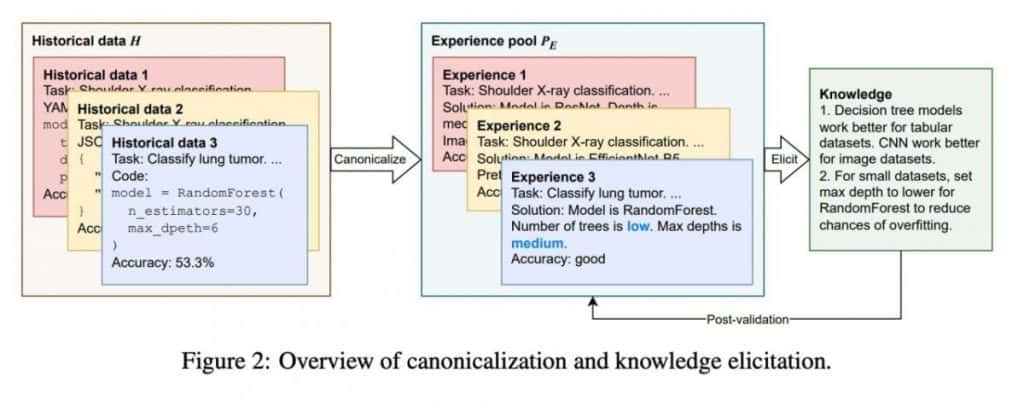Introducing MLCopilot: Utilize the Potential of Large Language Models to Aid Developers in Their Machine Learning Efforts
In Brief
MLCopilot presents an innovative approach to employing machine learning models, automating the complex process of tuning parameters and model structures.
It functions on two distinct levels: offline, where it gathers insights from a vast array of machine learning experiments, and online, where it utilizes a specific prompt to inform decisions.
This tool offers significant advantages, including increased processing speed and reduced labor costs.
Machine learning models have found applications across various domains, but traditionally, their training has demanded extensive manual involvement. The challenge has always been in choosing the most effective parameters and architectures, a task that necessitates a deep understanding and experience. However, with advancements in technology and the emergence of powerful language models like GPT-3.5, we can now automate much of this process. This innovation paves the way for a revolutionary approach to tackling complex tasks through MLCopilot.

MLCopilot It operates on two fronts: offline, where concepts like intent and model design are consolidated, backed by data from numerous machine learning trials which create the foundational knowledge for MLCopilot. On the online front, MLCopilot leverages a tailored prompt that includes pertinent examples from earlier experiments to ascertain the best solution to a given challenge. Such outcomes have proven to be more reliable than those achieved through manual selection of established algorithms.

Interestingly, historical experiment evaluations have been translated into qualitative terms—“very low,” “low,” “medium,” “high,” and “very high”—allowing the model to discern effective strategies.
The model taps into a vast pool of historical data through an external memory component (Retriever), enabling it to propose experiments with novel data and tasks rooted in generalized insights.

The article concludes with a somewhat alarming statement for some but an encouraging one for others: “We aspire that our methodological design can inspire the larger community and advance LLMs towards achieving artificial general intelligence (AGI).”
The recent introduction of GPT-4—a refined iteration of its predecessor, GPT-3.5—has reached an impressive new level, surpassing GPT-3.5 across a variety of academic benchmarks.
- On March 14, OpenAI announced A Guide to Using Midjourney for Free Permanently: Five Easy Steps
Read more about AI:
Disclaimer
In line with the Trust Project guidelines Damir leads the team as a product manager and editor at Metaverse Post, where he covers subjects including AI/ML, AGI, LLMs, the Metaverse, and the Web3 landscape. His writing reaches an impressive audience of over a million users monthly. With ten years of experience in SEO and digital marketing, he is recognized as an expert in his field. His insights have been featured in prominent platforms such as Mashable, Wired, Cointelegraph, The New Yorker, Inside.com, Entrepreneur, BeInCrypto, among others. As a digital nomad, Damir travels extensively between the UAE, Turkey, Russia, and the CIS. He holds a bachelor's degree in physics, which he believes equips him with the critical thinking skills essential for navigating the dynamic online environment.







